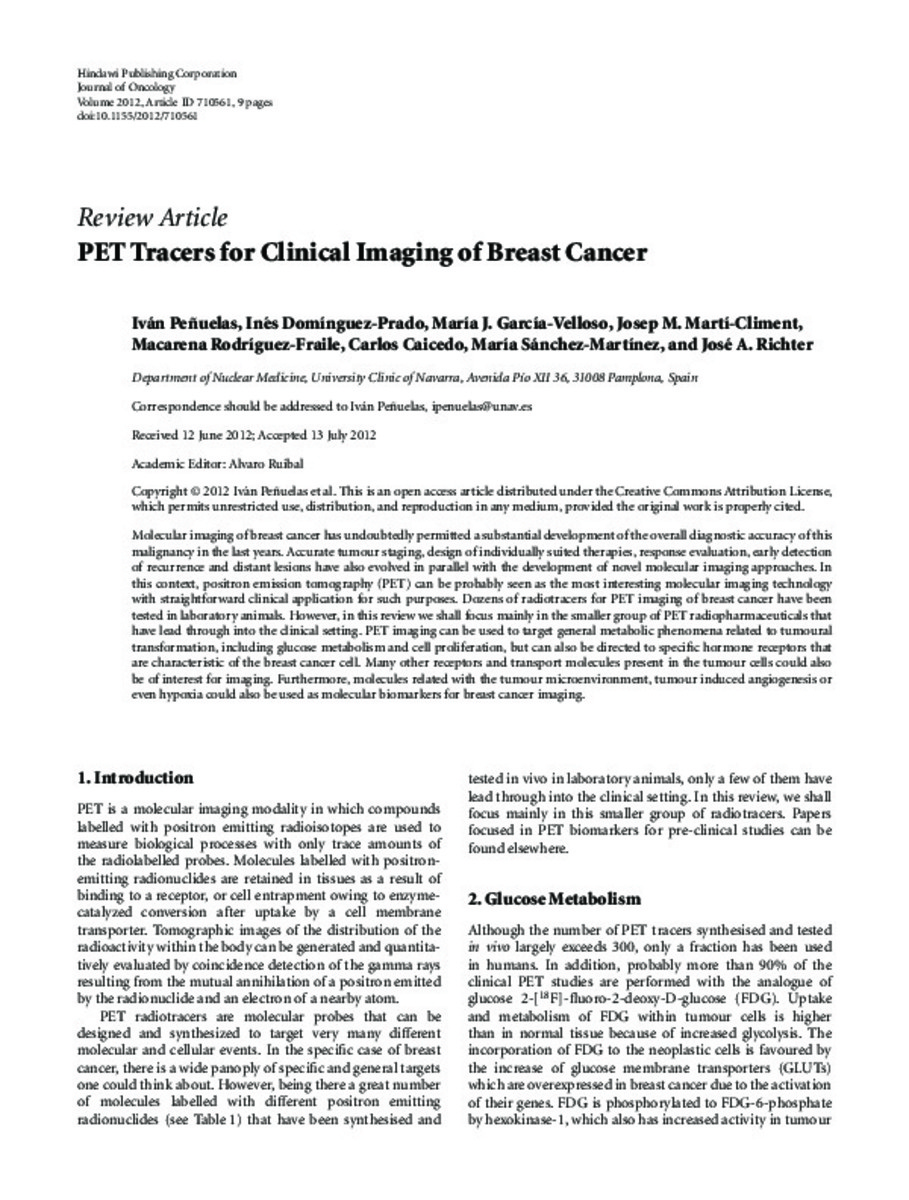Full metadata record
| DC Field | Value | Language |
|---|---|---|
| dc.creator | Peñuelas-Sanchez, I. (Ivan) | - |
| dc.creator | Dominguez-Prado, I. (Inés) | - |
| dc.creator | Garcia-Velloso, M. J. (María José) | - |
| dc.creator | Marti-Climent, J.M. (Josep María) | - |
| dc.creator | Rodriguez-Fraile, M. (Macarena) | - |
| dc.creator | Caicedo, C. (Carlos) | - |
| dc.creator | Sánchez-Martínez, M.(María) | - |
| dc.creator | Richter, J.A. (José Ángel) | - |
| dc.date.accessioned | 2014-07-17T07:24:41Z | - |
| dc.date.available | 2014-07-17T07:24:41Z | - |
| dc.date.issued | 2012 | - |
| dc.identifier.citation | Peñuelas I, Domínguez-Prado I, García-Velloso MJ, Martí-Climent JM, Rodríguez-Fraile M, Caicedo C, et al. PET tracers for clinical imaging of breast cancer. J Oncol. 2012;2012:710561. | es_ES |
| dc.identifier.issn | 1687-8450 | - |
| dc.identifier.uri | https://hdl.handle.net/10171/36168 | - |
| dc.description.abstract | Molecular imaging of breast cancer has undoubtedly permitted a substantial development of the overall diagnostic accuracy of this malignancy in the last years. Accurate tumour staging, design of individually suited therapies, response evaluation, early detection of recurrence and distant lesions have also evolved in parallel with the development of novel molecular imaging approaches. In this context, positron emission tomography (PET) can be probably seen as the most interesting molecular imaging technology with straightforward clinical application for such purposes. Dozens of radiotracers for PET imaging of breast cancer have been tested in laboratory animals. However, in this review we shall focus mainly in the smaller group of PET radiopharmaceuticals that have lead through into the clinical setting. PET imaging can be used to target general metabolic phenomena related to tumoural transformation, including glucose metabolism and cell proliferation, but can also be directed to specific hormone receptors that are characteristic of the breast cancer cell. Many other receptors and transport molecules present in the tumour cells could also be of interest for imaging. Furthermore, molecules related with the tumour microenvironment, tumour induced angiogenesis or even hypoxia could also be used as molecular biomarkers for breast cancer imaging. | es_ES |
| dc.language.iso | eng | es_ES |
| dc.publisher | Hindawi | es_ES |
| dc.rights | info:eu-repo/semantics/openAccess | es_ES |
| dc.subject | PET | es_ES |
| dc.subject | Breast cancer | es_ES |
| dc.subject | Diagnosis | es_ES |
| dc.title | PET tracers for clinical imaging of breast cancer | es_ES |
| dc.type | info:eu-repo/semantics/article | es_ES |
| dc.identifier.doi | http://dx.doi.org/10.1155/2012/710561 | es_ES |
Files in This Item:
Statistics and impact
Items in Dadun are protected by copyright, with all rights reserved, unless otherwise indicated.






